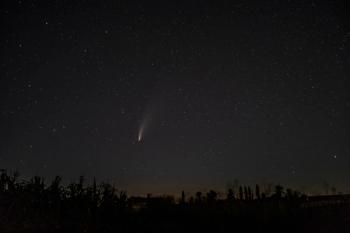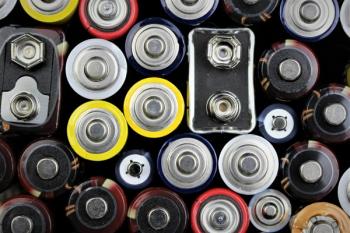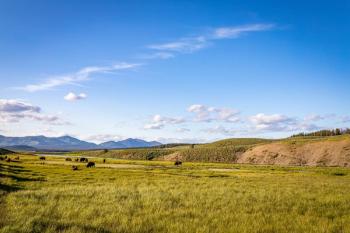Key Points
- Drone-based hyperspectral imaging paired with PCA accurately estimates soil moisture at 10 cm and 30 cm depths.
- Artificial Neural Networks outperformed other machine learning models, especially in non-irrigated, water-stressed plots.
- Spectral data correlates more strongly with root-zone moisture during periods of drought stress.
- Study calls for broader application across crops and soil types to enhance model robustness.
High-Tech Farming Takes Root: Drones, Spectroscopy, and AI Join Forces
In a new study published in Sensors, researchers from the School of Plant and Environmental Sciences at Virginia Polytechnic Institute and State University (Virginia Tech) explore a powerful new approach to soil moisture monitoring that could advance precision agriculture. The research, led by Milad Vahidi, Sanaz Shafian, and William Hunter Frame, uses drone-mounted hyperspectral sensors and machine learning (ML) algorithms to estimate soil moisture at depths of 10 cm and 30 cm beneath cornfields—an area traditionally challenging for remote sensing methods (1).
Precision from Above: Hyperspectral Imaging Meets Machine Learning
The study centered on the use of an unmanned aerial vehicle (UAV) equipped with a hyperspectral sensor (L-Pika) to capture detailed canopy reflectance data over a 50 x 100 meter cornfield at the Virginia Tech Tidewater Agricultural Research Extension Center (TAREC) in Virginia. Hyperspectral imaging, which captures hundreds of narrow spectral bands from 400 nm to 1100 nm, allows for the detection of subtle variations in plant health linked to soil moisture conditions (1).
To distill meaningful insights from this rich spectral data, the team applied principal component analysis (PCA), a statistical tool that isolates the most informative signal data from the remote spectral images. These wavelengths were then fed into an ML pipeline to predict soil moisture levels. Among the algorithms tested, artificial neural networks (ANNs) significantly outperformed others, including random forest, support vector regression (SVR), and gradient boosting (XGBoost) (1).
The ANN models showed particularly strong performance in non-irrigated plots, where water-stressed corn plants exhibited greater spectral variability. This variability, the study found, enhanced the correlation between the canopy’s reflectance patterns and soil moisture in the root zone, especially at the 30 cm depth, where deeper roots responded to drier surface conditions (1).
Spectral Signatures Reveal Root-Level Water Stress
A key discovery was that the strength of the canopy-spectral-to-soil-moisture relationship changes over the growing season. Early in the season, as chlorophyll content is high and plants are more resilient, this correlation weakens. However, as environmental stress increases, particularly in non-irrigated plots, the canopy’s spectral signature becomes more indicative of root-zone moisture levels (1).
The researchers noted that under these water-stressed conditions, the ANN model showed the lowest root mean square error (RMSE), indicating the highest estimation accuracy. These findings demonstrate that spectral data can serve as a reliable proxy for soil moisture—especially at depths where roots are most active (1).
Limitations and Future Directions
Despite its promising results, the study had several limitations. First, the experiment was conducted on corn grown in sandy soil—a condition that may not generalize to other crops or soil types. Second, high moisture levels caused spectral saturation, leading to underestimation errors in some cases. The researchers suggest refining the ANN’s loss function to penalize such errors more effectively (1).
They also advocate incorporating additional variables such as plant structure, growth stage, and potentially thermal imagery to enhance future model performance. Broader studies across varied crops and soils could expand the applicability of this approach across agricultural systems (1).
Toward Smarter Agriculture
Ultimately, this research underscores the potential of UAV-based hyperspectral imaging combined with PCA and machine learning to bridge the spatial and depth limitations of traditional soil moisture measurement techniques. Unlike satellites or surface-only sensors, drones can deliver high-resolution, field-specific insights at multiple depths, making them ideal for precision agriculture (1–3).
As climate and condition variability continues to challenge farming systems worldwide, tools like these could be essential for managing water resources, improving crop resilience, and sustaining agricultural productivity (1–3).
References
(1) Vahidi, M.; Shafian, S.; Frame, W. H. Precision Soil Moisture Monitoring Through Drone-Based Hyperspectral Imaging and PCA-Driven Machine Learning. Sensors 2025, 25 (3), 782. DOI: 10.3390/s25030782
(2) Halstead, D. A.; Benmerrouche, L. N.; Gossen, B. D.; McDonald, M. R. Early Detection of Clubroot in Canola Using Drone-Based Hyperspectral Imaging and Machine Learning. Eur. J. Agron. 2025, 170, 127727. DOI: 10.1016/j.eja.2025.127727
(3) Yu, R.; Luo, Y.; Ren, L. Detection of Pine Wood Nematode Infestation Using Hyperspectral Drone Images. Ecol. Indic. 2024, 162, 112034. DOI: 10.1016/j.ecolind.2024.112034






